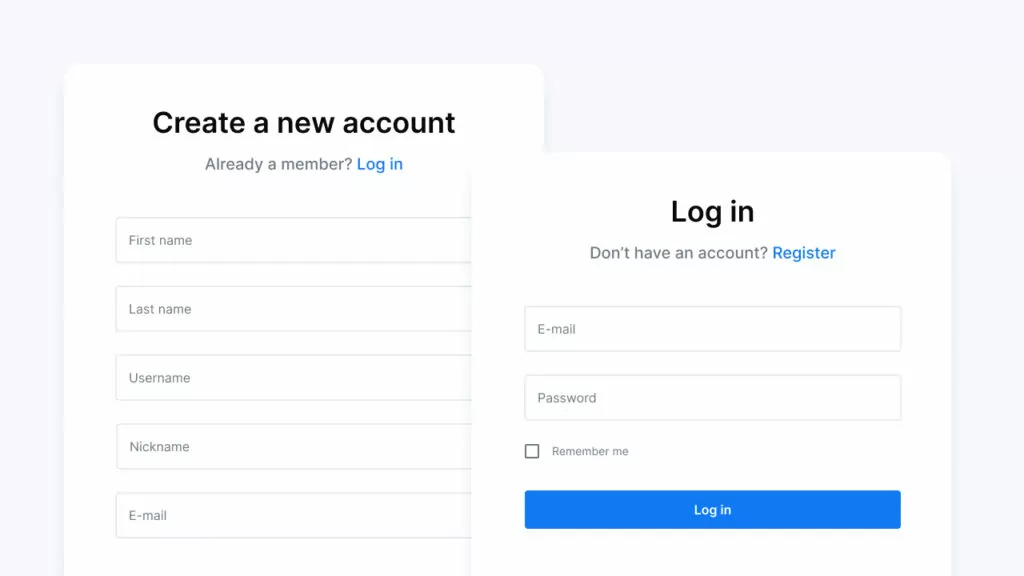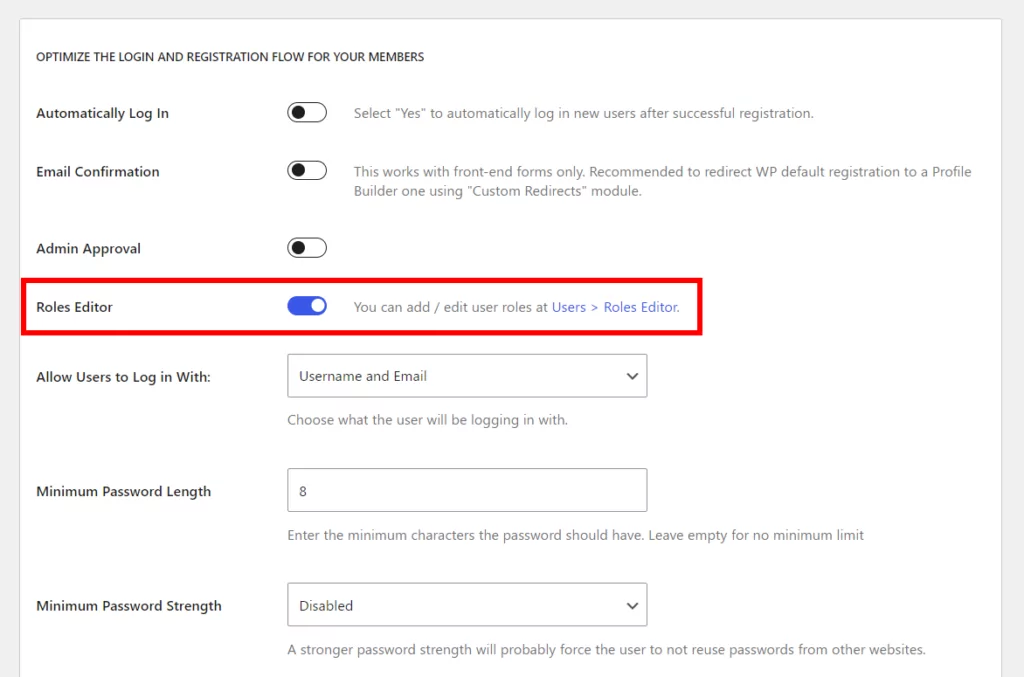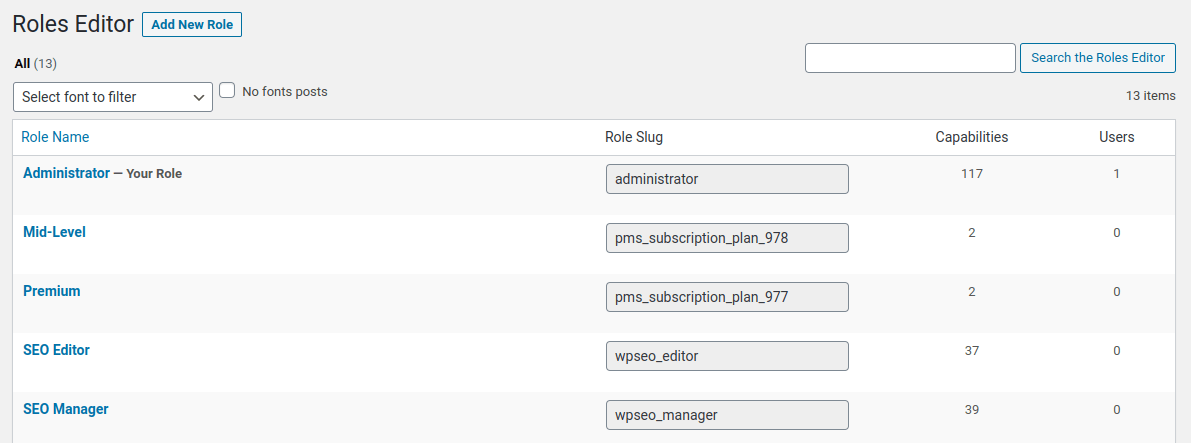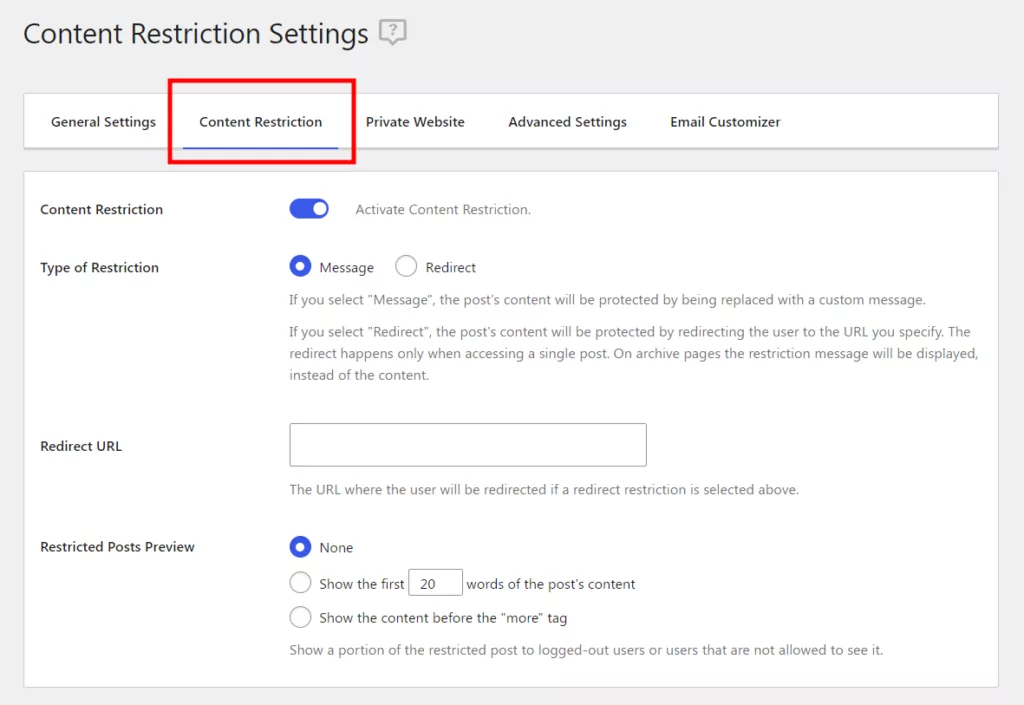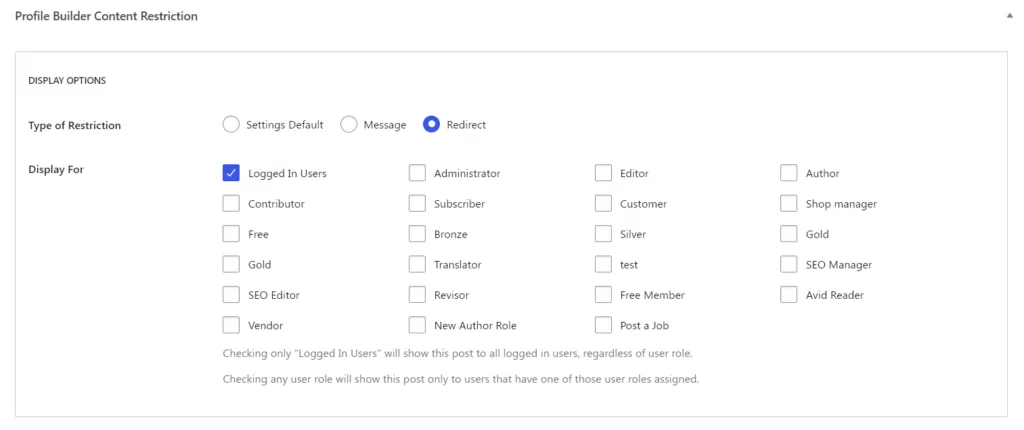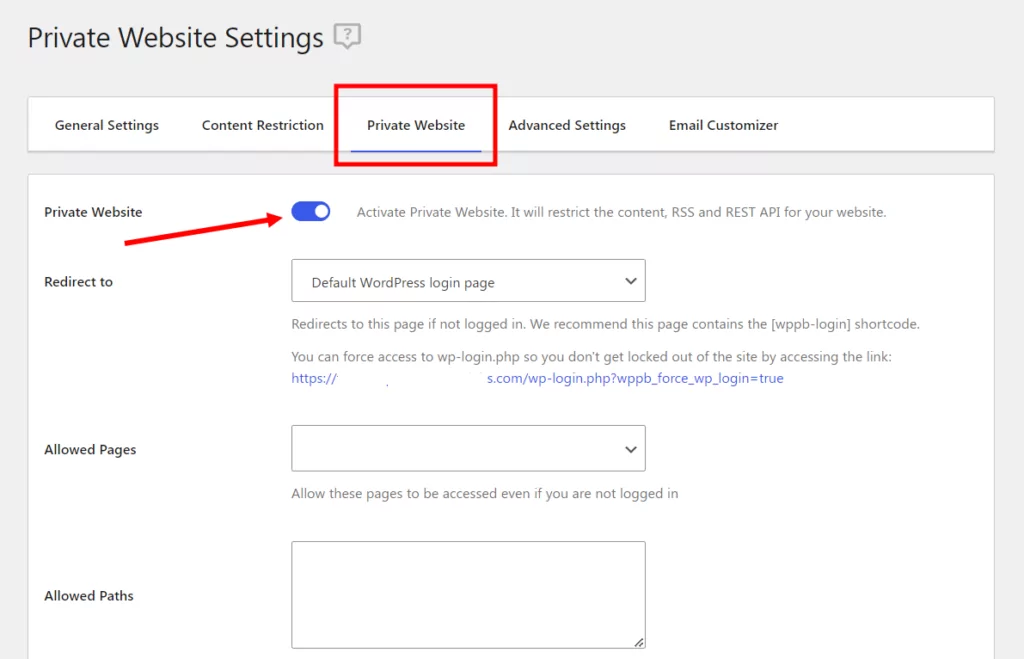
Table of Contents
You spend hours writing, researching, editing, and creating the best content possible for your website. Most of the time, your goal is to have as many people as possible view your content. However, sometimes you might need to set up the WordPress require login for certain pages option, so you can hide content and only make it available to users who are logged in. And in some cases, you might even want to make your entire WordPress site private.
One of the most common reasons for this is because you’ve created a membership website and you want to restrict content for paying subscribers. However, there are even more reasons, as you’ll soon learn.
In this post, you’ll learn how to set up WordPress in order for it to require login to view a certain page. You’ll also learn about the benefits of using a WordPress content restriction plugin, what to look for in such a plugin, and how to set up the Profile Builder Pro plugin to require login on your own website, like this:
Common Use Cases For Using WordPress Require Login for Certain Pages
There are multiple reasons you’d want to require users to log in to view a WordPress page. Here are some of the most common use cases:
With a Membership Website
If you’re running a membership site, you’ll want to restrict individual pages as “members only” and require a login to view them.
With membership sites, you’ll usually have multiple tiers of memberships, so you’ll want to restrict particular pages or sections of your WordPress site that correspond to their respective plans.
This is also common with subscriber-only eCommerce stores, as you can collect subscriber information before they view your product catalog. Plus, it makes your store seem highly exclusive.
With a Private Blog
Some things are meant to be private. Like a side project that’s not ready for the world, an internal company blog for employees, or it could be something as a family blog for your cherished memories.
By requiring login to view your blog or even individual pages, you can create a sense of online privacy not commonly found today.
For Password Protected Paid Content/Online Courses
When creating online courses or pay-per-view content, you need a way to password-protect that content from non-users.
A WordPress login plugin will require users to log in and create an account or become a paid member to view your course or content.
With a Client-Only Portal
If you’re a freelancer or run an agency, you might have certain client-only pages, such as pricing or portfolio pages.
With a WordPress login page plugin, you can give your clients a unique login or password to view pages only their eyes need to see.
Features to Look for in a WordPress Login Page Plugin
There’s a variety of different WordPress login page plugins you can use for your site. Here are some of the essential features you’ll want in a quality WordPress login page plugin:
Intuitive and Elegant User Registration/Login Pages
Look for a plugin that lets you customize your registration forms, not only in appearance but also in regard to form fields. Your registration and custom login pages should look much better than the traditional “wp-login” pages standard with WordPress.
You also need a plugin that lets you customize your login forms with the necessary fields. As a bonus, you’ll want a plugin that supports conditional logic, so new fields appear as your user fills out the form.
Ability to Set Custom User Roles
Since you’re here to require users to log in to view individual pages, you’ll want a plugin that lets you set custom user roles.
Users will be able to access certain pages and posts based on their user role, or if they’re logged in or logged out.
Integration with WooCommerce
WooCommerce integration can help you create better user profiles for your store or even restrict certain products for different users.
You can even require users to log in to view the products you have for sale.
What is Profile Builder Pro?
WordPress has built-in settings that let you restrict access based on user roles. This is more of an admin feature rather than functionality you want to use if you’re building a membership site, or want to create user-friendly private pages.
Profile Builder Pro is an easy-to-use plugin that lets you enhance your WordPress login and registration process. If you’re a WooCommerce store owner, you can use this plugin to create a “private” eCommerce store that users must register to access.
With this plugin, you can create custom user registration forms to gather all the necessary information about your users. You can also customize the registration and login pages, and provide your users with front-end profile editing pages that contain plenty of customization options.
It’s also easy to use. You won’t have to make any changes to the “wp-login.php” file, “functions.php” file, or any other PHP files, nor make CCS changes to adjust the appearance.
Here are some additional features of the Profile Builder Pro plugin:
- Shortcodes for front-end login, registration, password reset, and edit profile;
- Email confirmation for users once they register (to help fight spam);
- WordPress admin approval for new users, so you can enforce login control;
- Enforce the password strength of new users to decrease the chances of a brute force login;
- Customize profile registration fields to obtain all relevant user information;
- Create dynamic front-end registration forms built on conditional logic;
- Content restriction based on user roles and logged-in/logged-out status;
- And much more.
Profile Builder Pro
Create beautiful front-end registration and profile forms with custom fields. Setup member directories, custom redirects, cutomize user emails & more using the all in one user management plugin.
Get Profile BuilderBut, the main reason you’re here is to learn how to restrict individual pages on your WordPress site and require a WordPress login to view that page (or your entire website). So let’s get into it!
How to Set Up the Profile Builder Pro Plugin
Below you’ll learn how to set up the plugin, so you can restrict access to certain pages for logged-in users, or even restrict access to your entire site.
With this plugin setup you’ll be able to require users to log in to view WordPress pages in two main ways:
- Setup content restriction to force users to log in to view specific pages;
- Password protect an entire website and require a login.
1. Install the Profile Builder Pro Plugin
Once you’ve purchased the plugin, you’ll need to upload it to your WordPress site.
In your WordPress dashboard, navigate to Plugins → Add New. Then upload the ZIP file containing the plugin.
Once it’s finished uploading, click Activate and the plugin will be live on your site.
2. Set Up User Roles
You can create different user roles and manage what they have access to on your site. This is important to set up if you’re creating a membership site with multiple levels.
To set user roles, navigate to Profile Builder → Settings → General Settings, and then turn the “Roles Editor” switch on.
If you navigate to Users → Roles Editor, you can add and change user roles across your website.
As an example, we’re going to add a new role called Subscriber and add a new capability that allows this user to read private posts.
In the Select capabilities section, you can choose whatever additional capabilities you’d like that role to have; in this case, it’s “read_private_posts”. You can add as many user roles as you’d like and give them different capabilities across your site.
3. Add Content Restriction
To set up content restriction, navigate to Profile Builder → Settings, then click on the Content Restriction tab.
Then set Enable Content Restriction to Yes.
This allows you to restrict content across your site. When users visit a page and aren’t logged in, you can display a message or redirect them to a login or registration page.
4. Content Restrict Individual WordPress Pages
Now, navigate to a page you want to restrict for specific users, in the editor mode. This is great for blogs or other websites that want a portion of the site to remain private.
Below the content area, you’ll find a meta box labeled Display Options. Here you can set the type of restriction, whether you want that to be a message or a redirect, and you can choose which logged-in users you want the page to display for.
Users with the right permissions will see the page normally, while users who aren’t logged in won’t be able to view the content.
You can customize this message as much as you’d like, adding images, or a link to your user registration page. If you have content you want to mark as subscriber-only, then activate this setting.
5. Set Up Private Website Functionality
To make your entire website private navigate to Profile Builder → Settings → Private Website.
In the Enable Private Website section, change the drop-down to Yes.
You can also set individual pages that are allowed, such as your registration page. Pages that you add to the Allowed Pages section will be visible to users that aren’t logged in.
You can choose where you want this to redirect to, whether that’s the standard wp-login page, Registration page, or elsewhere.
If you’re creating a members-only website for your clients or a separate website to host your paid courses and content, you’ll want to use this to make your entire site private.
Set Up WordPress Require Login for Certain Pages Today With Profile Builder Pro
With Profile Builder Pro, you can require login to view certain WordPress pages or even your entire website. You can hide membership content, create private content portals for VIPs, make users log in to view support documentation, or even create a private WooCommerce store.
To get started, check out all the features of Profile Builder Pro and start creating elegant user login and registration pages today.
Profile Builder Pro
Create beautiful front-end registration and profile forms with custom fields. Setup member directories, custom redirects, cutomize user emails & more using the all in one user management plugin.
Get Profile BuilderDo you still have questions about requiring login for accessing certain pages in WordPress? Ask them away in the comments below!
Related Articles

How to Customize the WooCommerce Login Page (No Code Needed)
Searching for a solution to customize the WooCommerce login page and otherwise control login behavior on your WooCommerce store? If you allow (or force) registration on your store, you'll want to create a user-friendly login experience so that your shoppers can easily log in to their accounts and access other key features. In this post, […]
Continue Reading
8 Best WordPress User Registration Plugins
Not sure what WordPress user registration plugin to use for your project? Going through all the WordPress user registration plugins can be disorienting. You may have spent hours and hours searching for plugins and tutorials to help you with your project, and you’re still as confused as you were when you started. Imagine finding the […]
Continue Reading
How to Customize WordPress Email Login Behavior (+ Registration)
Searching for a WordPress email login feature so that you can customize your site's login process, such as requiring users to use their email address instead of a username? By default, WordPress lets users log in with either their username and password or their email and password via the default login page. But if you […]
Continue Reading

